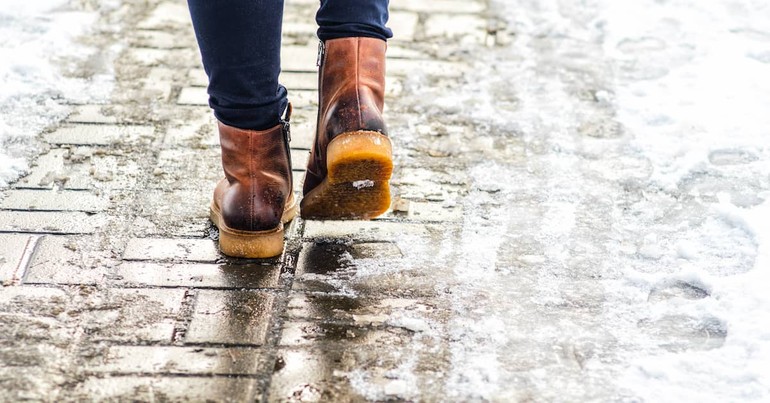The Centers for Advanced Orthopaedics is redefining the way musculoskeletal care is delivered across the region with locations throughout Maryland, DC, Virginia and Pennsylvania.
Common Winter Foot & Ankle Injuries: Choosing the Proper Footwear

During winter, foot and ankle injuries become more prevalent, and at The Orthopaedic Foot & Ankle Center, we understand the importance of both prevention and treatment. In this article, we delve deeper into specific winter-related injuries and how carefully selected footwear plays a critical role in minimizing these risks.
Fractured Ankles Due to Falls
Winter brings a heightened risk of fractured ankles, mainly due to falls on icy surfaces. Orthopaedic surgeon Dr. Thomas Sanders highlights this issue, stating, “The busiest days I’ve ever had on call in the ER have been after ice storms. The black ice is often not visible, and it only takes one bad step to break an ankle (or another bone!).” To reduce this risk, the use of shoes with non-slip soles is crucial. They provide essential traction that significantly reduces the likelihood of slipping. Particularly in regions prone to heavy snow and ice, choosing footwear equipped with a rugged, grippy tread is strongly advised.
Ankle Sprains in Winter Activities
Activities like ice skating or skiing require shoes that offer firm ankle support. For ice skaters, a well-fitted skate with adequate ankle stabilization is key. Skiers should ensure their ski boots are correctly fitted to prevent unnecessary movement that could lead to sprains.
Frostbite Prevention
Frostbite, particularly in toes, can occur quickly in freezing temperatures. Footwear with thick, insulated lining is crucial. Materials like wool or a synthetic insulator are effective in retaining heat. Additionally, shoes should be water-resistant to prevent snow or water from soaking through, which can rapidly decrease foot temperature and lead to frostbite.
Preventing Stress Fractures
With increased physical activity in winter, stress fractures can occur. Footwear with cushioned soles helps absorb shock, reducing the strain on feet. For those engaging in winter running or hiking, shoes designed for these activities provide the necessary support and cushioning.
Dr. Sanders explains another cause of stress fractures in winter: "Another reason for increased stress fractures in the winter is low vitamin D. Colder weather means less sunlight and less time outside, both of which are key to vitamin D levels in the body. This leaves the bones more susceptible to stress fractures.”
Importance of Footwear Features
When choosing winter footwear, consider the specific features:
- Traction: Look for soles with deep grooves or specialized patterns for grip.
- Support: Shoes should fit snugly around the ankle.
- Insulation: Seek materials that keep feet warm.
- Water Resistance: Ensure shoes can withstand wet conditions.
Proper footwear is a simple yet vital step in preventing winter foot and ankle injuries. By choosing shoes with the right features, many common winter injuries can be avoided. Should injuries occur, our team at The Orthopaedic Foot & Ankle Center is here to offer professional treatment and advice. Stay safe this winter and take the right steps to protect your foot and ankle health!